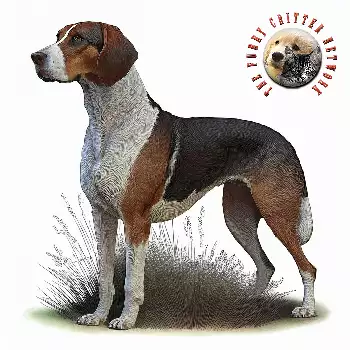The Black Hound adapts to family life by establishing strong bonds with household members while maintaining the independent character essential to its working heritage. These dogs typically select one family member as their primary handler, developing an especially close relationship with that individual while remaining loyal and affectionate toward other household members. This bonding pattern reflects the breed's traditional working relationship with a primary hunter while cooperating with other members of the hunting party.
Integration with children requires careful management and early socialization to ensure positive interactions. Black Hounds generally display patience with family children, often assuming a protective role that extends their natural guarding instincts to include the youngest family members. However, the breed's size and energy level necessitate supervision during play sessions, particularly with smaller children who might be accidentally overwhelmed by an enthusiastic dog's movements.
The breed's approach to household routines reflects their working dog heritage, with Black Hounds typically appreciating structure and consistency in daily activities. These dogs adapt well to predictable schedules for feeding, exercise, and rest periods, often anticipating routine activities and positioning themselves appropriately. Their intelligence allows them to understand and adapt to family rules, though enforcement requires consistency from all household members.
Multi-pet households present both opportunities and challenges for Black Hound ownership. The breed's pack instincts facilitate relationships with other dogs, particularly when proper introductions and hierarchy establishment occur. However, their strong prey drive creates potential conflicts with smaller pets such as cats, rabbits, or birds unless careful socialization begins during puppyhood and continues throughout the dog's development.
Space requirements for optimal family integration include access to secure outdoor areas where the dog can safely investigate scents and exercise freely. While Black Hounds can adapt to various living situations, they thrive best in homes with yards that allow natural behaviors such as patrolling, scenting, and moderate territorial supervision. Indoor living arrangements should provide adequate space for the dog to move freely and retreat to quiet areas when desired.
The breed's protective nature manifests as vigilant awareness of family activities and surroundings rather than aggressive guarding behavior. Black Hounds typically monitor household activities from strategic locations, alert to changes in routine or the arrival of visitors. Their natural tendency to investigate and assess new situations makes them effective family guardians who can distinguish between normal activities and potential threats.
Training within the family context benefits from involving multiple household members in consistent approaches to commands and expectations. The breed's intelligence and eagerness to please facilitate learning, but their independent nature requires patient, positive training methods that respect their problem-solving abilities. Family members should understand that Black Hounds may need time to process and comply with commands, particularly when the requests conflict with strong scenting interests.

